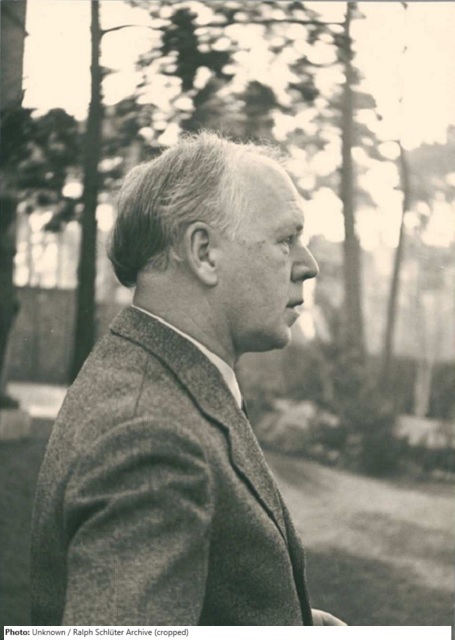Georg Kolbe

Biographical information
| Roles | Competed in Olympic Games • Referee |
|---|---|
| Sex | Male |
| Full name | Georg•Kolbe |
| Used name | Georg•Kolbe |
| Born | 15 April 1877 in Waldheim, Sachsen (GER) |
| Died | 20 November 1947 in Ost-Berlin (East Berlin), Berlin (GER) |
| NOC |  Germany Germany |
Biography
German sculptor Georg Kolbe studied in Dresden and München, and then went to Paris and Roma. He initially devoted himself to painting, before creating his first sculptures in 1898. In 1902 he went to Leipzig and lived in Berlin since 1904, where he gave up painting. He became a member of the Berlin Secession in 1905, and was made a Board Member in 1911. Even before World War I Kolbe was one of the best German sculptors and the first scholarship holder at the Villa Romana in Firenze. In 1914 he switched to the Free Secession becoming its president in 1919. After the war, in which he participated as a volunteer, his sculptures became more and more influenced by expressionism. In 1918 he was appointed as a professor and in the following year was made a member of the Prussian Academy of Arts. Even before 1933 he was warned about the Nazis, although they considered some of his sculptures as paradigms of an Aryan man. Some of his works were removed, others remained, yet he still received further orders. In 1934, Kolbe signed the “Call of Cultural Workers” in favor of Adolf Hitler and regularly attended the Great German art exhibition at the Deutsches Haus in München. He also created two statues for the Reich Sports Field for the 1936 Berlin Olympics.
However, Kolbe was not ready to tackle the monumentalism Hitler proposed, as Arno Breker did. However, in 1944 Hitler placed him on the list of the 12 most important German visual artists, although he never adopted Nazi politics. Overall, Kolbe created over 1,000 sculptures. In Berlin-Charlottenburg, a museum was installed in 1950 in his house and atelier with some of his sculptures exhibited in the garden, in what was the first museum founded in Berlin after World War II. In 2013-14 an exhibition by one of his closest friends, Renée Sintenis, was held in this museum.
The 130 cm high plaster model of the Standing Woman, in the catalog raisonné called Young Woman, was created in 1926. It is now part of the Kolbe Museum. Copies of the approximately 10 bronze casts are available, for instance, at the Walker Art Center Minneapolis and at the Von der Heydt Museum Wuppertal. One copy was destroyed in 1943 in Kolbe’s garden by a bomb. The work Boys wrestling could be identical with the 52 cm high bronze Scherzo, which dates back to 1908. Since both sculptures did not participate in the competition, they were of course not subject to the regulations.
Results
| Games | Discipline (Sport) / Event | NOC / Team | Pos | Medal | As | |
|---|---|---|---|---|---|---|
| 1928 Summer Olympics | Art Competitions |  GER GER |
Georg Kolbe | |||
| Sculpturing, Statues, Open (Olympic) | ||||||
| Sculpturing, Statues, Open (Olympic) |
Referee
| Games | Sport (Discipline) / Event | NOC / Team | Phase | Unit | Role | As | |
|---|---|---|---|---|---|---|---|
| 1936 Summer Olympics | Art Competitions |  GER GER |
Georg Kolbe | ||||
| Sculpturing, Medals, Open (Olympic) | Final Standings | Judge | |||||
| Sculpturing, Reliefs, Open (Olympic) | Final Standings | Judge | |||||
| Sculpturing, Statues, Open (Olympic) | Final Standings | Judge |